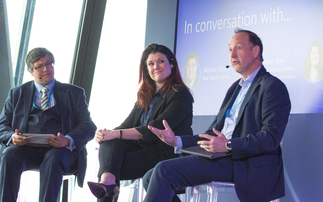
Susannah Calder, Partner, AON
Any bulk annuity transaction is typically a cause for celebration; LinkedIn articles are shared, champagne emojis are sent, headlines are grabbed - but it is by no means the end of the journey for the scheme. In fact, life after transaction can be complex and tricky to navigate. The work required before a scheme can be fully bought out or wound-up involves multiple stakeholders and intricately linked workstreams being completed in tight timescales and with many interdependencies.
With the unexpected rise in funding levels over the last 18 months, many schemes have now found themselves in the fortunate position of being able to consider their plans for life after transaction much earlier than planned. This is shown by the fact that only three of the 95 deals in the first half of 2023 were pensioner-only transactions, with full scheme deals instead dominating the market. This is in contrast to the structure prevailing until recently, where schemes used partial buy-ins on their journey to eventual buyout, and we expect the trend to continue for the foreseeable future.
So, what does this mean for the market?
While some schemes may seek to use their full-scheme buy-in as a longer-term investment, the vast majority are using it as a stepping-stone to buyout and wind-up. Increasingly, we are also seeing schemes which have reached this fully bought-in stage that are looking to accelerate the timescales to buyout and wind-up, as part of a single project. This can be an efficient route to ultimately completing the project - however, it can rely on running a number of workstreams alongside one another. The success of this depends upon the adviser being skilled in executing these types of projects - and therefore choosing a partner for this stage of the journey should be one of the most important choices in the planning of the project.
With many complex workstreams to navigate and key milestone decisions to be made, it is important to consider the options and outcomes for the three main stakeholders: members, trustees and sponsors.
Member experience
The move to buyout and breaking the link to their pension scheme involves lots of change for members and can often be unsettling despite the extensive due diligence carried out by trustees and sponsors to ensure security and high-quality service after the handover. It is important therefore to ensure you have a strong and effective communications strategy to support your membership through this period of change, particularly since some of the member options previously offered may no longer be available.
As part of this communication strategy, many schemes are likely to communicate benefit changes following data cleanse work or GMP equalisation. While it can be preferable to complete these tasks ahead of transaction -not least since it helps with gaining insurer attention and more attractive pricing - the majority of schemes will carry out these stages in the period between buy-in and buyout. This is something which is facilitated by all active insurers in the market; they are willing to support these data cleansing actions after buy-in, as our 2023 UK insurer survey demonstrated earlier this year.
Later in the process, and closer to reaching buyout and wind-up, schemes will begin to consider winding-up lump sums or consultations on the use of any surplus. At this point, queries from members may increase as a result of nervousness about the trustee no longer being around. Communicating this well in advance, using a variety of media and signposting in each communication, can prevent your membership from being overwhelmed.
The role of the trustee
With a trustee's primary responsibility being to ensure the security of members' benefits, it is important that any buyout and wind-up project is thoroughly planned and well executed. This will involve overseeing all overlapping workstreams to ensure their membership's benefits are settled accurately and efficiently. It also means that consideration needs to be given to the possibility of errors having been made before wind-up, or indeed members being missed and no pension entitlement insured. Both of these are examples of risks that may present themselves after the scheme is wound up and trustees are no longer responsible for the scheme - they do represent a real concern for trustees and sponsors alike.
To help manage these risks, schemes have options available to them either via residual risks cover with the insurer responsible for members from the point of buyout, or via an indemnity provided by the sponsor. Additionally, many schemes will seek trustee liability run-off insurance to cover the costs associated with any claims arising. While the risk of any such claims being made may be perceived to be low, having post wind-up protocols and cover in place can allow trustees to feel more comfortable with relinquishing their responsibility to members.
Sponsor Considerations
While sponsors may be the last-man-standing in the form of a company indemnity to the scheme, the wind-up of a scheme can potentially lead to an upside for the sponsor in the form of a refund of surplus. If a surplus remains after the buyout and wind-up is complete, this can be returned to the sponsor (subject to the provisions in the scheme rules) following a surplus consultation period with members. However, messaging for any such consultation should be carefully managed to ensure members are comfortable that their benefits are being paid in full and that the sponsor has fulfilled its obligations before any surplus is refunded.
This refund of surplus scenario may become more common with greater funding levels, and also following the 2023 Autumn Statement which reduced the tax payable by sponsors from 35 percent to 25 percent on any such surplus with effect from 6 April 2024. Indeed, this may also have the effect of pushing projects to complete on an accelerated timetable to expedite the return of the cash to the company. Watch this space as we move into 2024 and beyond.
Completing a settlement transaction does not mark the end of a scheme's life and in fact many of the members covered will have not yet reached pensionable age, meaning there is much work to do to ensure security for all members. Trustees and sponsors will need an experienced adviser to navigate the pitfalls of the final phase of the journey. Aon's Buyout and Wind-up Services team are the largest and most experienced in the market and have extensive knowledge to help you achieve an efficient wind-up and minimise risks to you and your members. Find out more here








